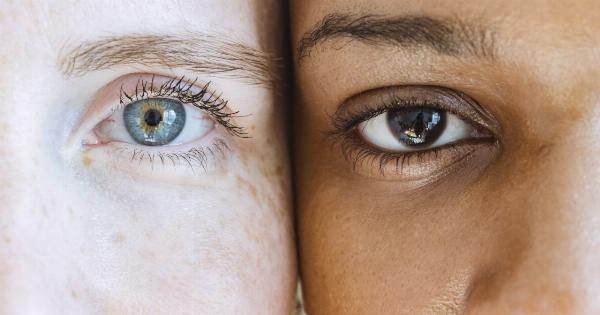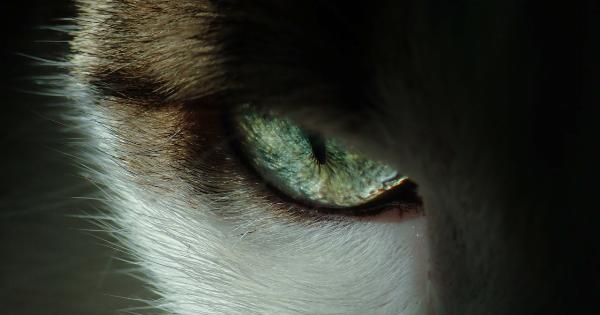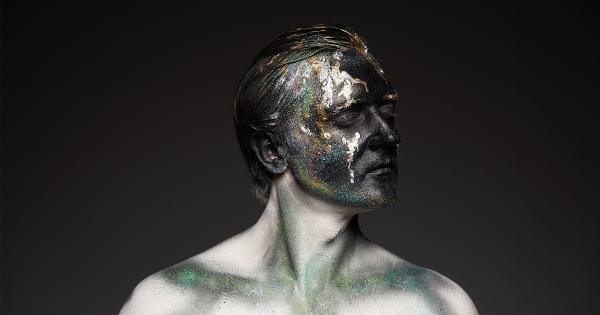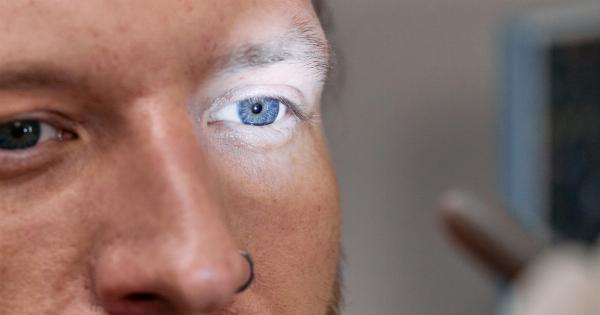When a baby is born, their appearance can be quite different from what they will eventually become. From their hair to their complexion, many changes take place during the first few months of life. One noticeable transformation is the color of their eyes.
It is not uncommon for a newborn to have blue eyes, only for them to change to a different color as they grow older. In this article, we will explore the reasons behind this natural eye color change and the factors that influence it.
The role of genetics
The color of a baby’s eyes is primarily determined by their genetics. Genes play a significant role in eye color, and they are inherited from the parents.
The basics of eye color inheritance can be broadly simplified into two main pigments: melanin and collagen.
Melanin is the pigment responsible for the darkness or lightness of a person’s eyes, hair, and skin. It is produced by cells called melanocytes. The more melanin present in the iris, the darker the eye color will be.
Collagen, on the other hand, contributes to the overall transparency and appearance of the iris.
How eye color develops
At birth, most babies have little melanin in their irises, which results in blue or gray eyes. This is because the melanocytes in their eyes have not yet started producing melanin.
As their bodies grow and develop, these cells gradually begin to release melanin. This melanin production continues throughout infancy and early childhood, leading to a gradual change in eye color.
The timing and pattern of eye color change vary from baby to baby. Some babies’ eye color may stay the same from birth, while others may experience multiple changes before settling into their permanent color.
It is essential to note that eye color changes typically occur before the age of three, although it is rare for the color to change after that age.
Influence of genetics on eye color
Genetics play a significant role in determining a baby’s eye color. Eye color is a polygenic trait, meaning it is influenced by multiple genes. The specific combination of these genes inherited from both parents determines the ultimate eye color.
There are two primary pigments responsible for eye color: eumelanin and pheomelanin. The genes involved in producing these pigments interact in complex ways to create a wide spectrum of eye colors.
The combination of these pigments can result in eye colors ranging from shades of blue and green to brown and black.
Blue eyes, for example, are typically a result of low levels of melanin in the iris, causing the eye to appear blue due to the scattering of light.
Brown eyes, on the other hand, are the result of higher levels of melanin that absorb more light and give the eyes a darker appearance. The genes involved in the production and distribution of melanin determine these variations in eye color.
The impact of melanin production
As previously mentioned, melanin production plays a crucial role in determining eye color. The amount and distribution of melanin produced in the iris can lead to various shades and colors.
At birth, newborns have barely any melanin in their irises. This is why their eyes often appear blue, as the lighter pigments present in the iris scatter the light. However, as melanocytes begin to produce melanin, the eye color may start to change.
Typically, the more melanin produced, the darker the eye color becomes. This gradual increase in melanin can lead to changes in eye color from blue to green, hazel, or brown.
It is important to note that this process is gradual and can take several months or even years to complete.
Other factors influencing eye color change
While genetics are the primary determinant of eye color, other factors can also influence the color change process:.
1. Absence of melanin at birth:
Babies of African, Hispanic, Asian, or Native American descent often have more melanin at birth than Caucasian babies. Consequently, their eyes may appear darker at an early stage, and the color change may be less noticeable.
2. Melanin distribution:
The way melanin is distributed in the iris can affect the final eye color. For example, if melanin accumulates around the outer edge of the iris, the eye may appear darker.
3. Environmental factors:
Exposure to light and temperature can also have a temporary effect on eye color. When exposed to bright light, the pupil constricts, and this can affect the appearance of eye color.
Additionally, cold temperatures can cause temporary color changes due to blood vessel constriction in the iris.
4. Age and development:
The timing of eye color change varies from baby to baby. Some infants may experience a quick color change within the first few months, while others may take up to three years for their eyes to settle on a permanent color.
Myths and misconceptions
As eye color change is a natural phenomenon, several myths and misconceptions surround the topic. It is crucial to separate fact from fiction and dispel any misconceptions regarding this intriguing process:.
Myth 1: Eye color changes with mood or emotions:
Contrary to popular belief, eye color does not change based on an individual’s mood or emotions. Eye color changes are solely determined by genetics and the production of melanin.
Myth 2: Eye color can be predicted with certainty:
While certain eye color patterns may run in families, predicting a baby’s eye color with absolute certainty is impossible.
Eye color inheritance is a complex process influenced by multiple genes, making it challenging to pinpoint the exact outcome.
Myth 3: Eye color change is permanent:
Eye color changes that occur during infancy and early childhood are typically permanent. Once the melanin production in the iris has settled, the eye color is unlikely to change significantly.
It is essential to remember that any future changes in eye color during adulthood could be an indication of an underlying health condition and should be examined by a healthcare professional.
Conclusion
Understanding why a baby’s eye color changes is an intriguing topic that combines genetics, melanin production, and environmental factors.
The mesmerizing transformation from blue to green, hazel, or brown is primarily determined by the interplay of various genes inherited from both parents. While eye color change is a natural process, it is important to recognize that each baby’s timeline and outcome may differ.
Watching a baby’s eyes transition in color during the early stages of life is a beautiful facet of their overall development.





















